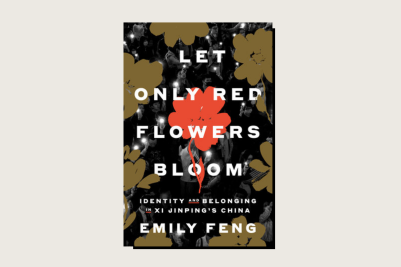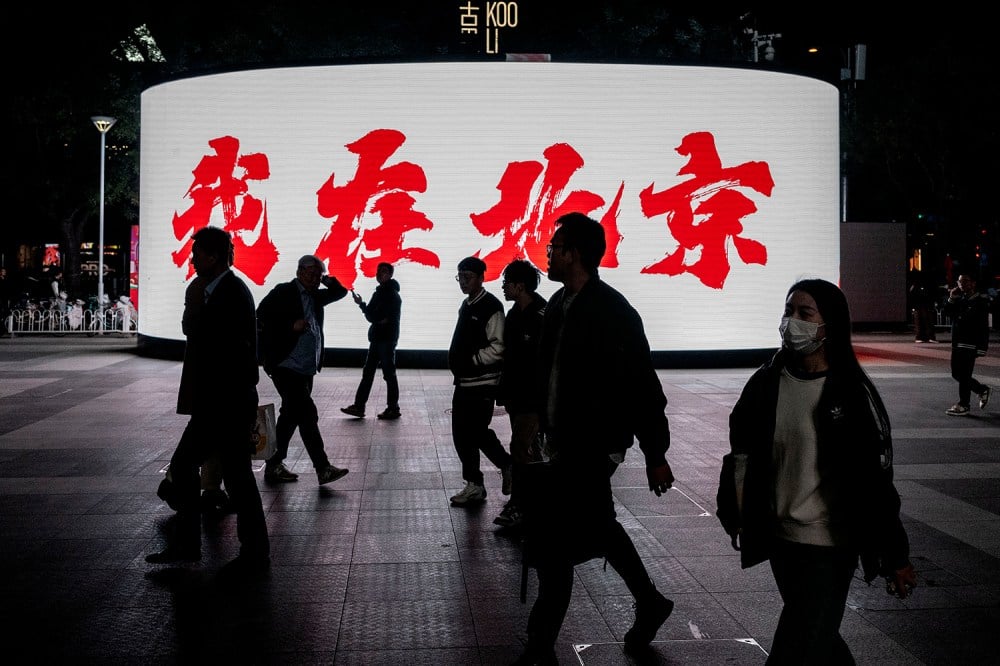Western commentators frequently speak of Chinese identity in sweeping generalizations. They encompass cultural norms (that Chinese people all speak Mandarin, revere their elders, or celebrate the Lunar New Year); philosophy (that Chinese people think in “centuries” rather than years); and governance (that Chinese people prefer alternatives to democratic governance because they think collectively). A common theme links these tropes: the idea that the Chinese people are a singular mass, unified in belief, culture, and politics.
These presumptions of unity aren’t confined to foreign commentators. They are also actively promoted by the Chinese leadership. For Xi Jinping, and the party leadership as a whole, Chinese identity is unified and narrow, defined by the conflation of a cultural Chinese identity, national Chinese citizenship, and loyalty to the Chinese Communist Party. As Xi proclaimed in his 2018 speech to the National People’s Congress, “Over the past thousands of years, the Chinese people have been united.”

Emily Feng’s book Let Only Red Flowers Bloom probes the effects of Xi’s identity-driven policy agenda through a series of lovingly penned personal stories. A journalist who reported on the ground in China, Feng was suddenly barred in 2022. In exile, she found herself grappling with the contradiction at the heart of China’s identity politics.
On the one hand, her reporting highlighted the sheer diversity of expressions of Chinese identity, both within the borders of China and beyond it. On the other, she saw how that diversity—a main source of her journalistic inspiration—was increasingly “seen as a liability” under Xi. She even saw this play out on a personal level. Harassed and surveilled as a foreign reporter several years, Feng was ultimately labeled a “race traitor” by the Chinese state. Her own desire to live in China, emanating from her identity as Chinese American, collided with a regime that did not see her way of being as acceptable.
As Feng reminds us, the Chinese state’s beliefs about identity drive many of its policies which, “in turn, are increasingly influential in shaping foreign and economic policy around the world.” Feng’s book, through its empathetic narrative and clear detail, both dispels myths about Chinese unity and highlights the cascading effects of identity-based policy decisions—decisions that are often cited yet poorly understood by Western elites. Among the most powerful throughlines in Feng’s stories is the increasingly Han-centric vision of Chinese identity that Xi has enforced through demands, often violent, that minoritized groups assimilate into this narrow identity. Feng devotes several chapters to non-Han people who express their cultures in ways that they believed were legal, even welcome, only to find those expressions suppressed. From Mongols defending language education to a Uyghur woman punished for a photo with Turkish President Recep Tayyip Erdogan, Feng shows how formerly safe actions were landing individuals into a labyrinth of state violence.
Ethnicity is not the only kind of identity Feng shows to be increasingly constrained. Another is political. The first chapter is devoted to a human rights lawyer who, once lauded for her commitment to justice, was later persecuted for doing that very work—an excellent example of someone for whom not just her Chinese identity but her Chinese patriotism was now found unacceptable. My favorite chapter focused on a scooter thief turned social media influencer who rose to fame for his authentic rejection of the grind of capitalism, then clashed with censors who deemed his brand an unacceptable defiance of state authority. As China remains difficult to access, these human stories—which highlight the nation’s diversity amid a narrowing of identity politics—are essential to understanding it.
The tension between the diversity of Chinese identities and the enforcement of a unified one is the subject of a fast-growing body of multi-disciplinary scholarship (a very incomplete set of examples can be found here, here, here, here, and here). Feng’s approach is narrative, not academic, but when taken together, her stories promote a distinct thesis: There is a dialectical relationship between state policy and the way her subjects reimagine their sense of self. To put it another way, oftentimes, it is not they who are changing, but China around them, which forces them to change in turn. Each of the people Feng covers are dissidents, but few set out to be that way. Instead, they stumbled into that identity as the things they were already doing suddenly became subversive, responding to the ways in which definitions of Chinese-ness are being changed from the top.
This dialectical process can be felt in all her stories but is particularly obvious when it comes to persecuted Muslims. Chapter six follows Yusuf, a Hui Muslim from Shaanxi, who thrived under the Party’s tolerance toward Islam in the early 2000s, founding education centers, publishing essays, engaging in religious study. But within two decades, the world he built around his faith had collapsed. The government was closing mosques, shuttering educational institutes, and locking up or sending to camps Muslims, including people he knew, simply for practicing the faith to which he had devoted his life.
There are times when Feng’s thesis hits complications. This is a book about Chinese identity that includes many people who reject the designation. To Feng’s credit, she is careful not to apply any identity to anyone who identifies otherwise. She also thoughtfully grapples with her own connection to Chinese identity, describing it as a “kernel” of who she is, but not “in the way [Chinese] authorities narrowly prescribed.” But including Uyghurs, Hong Kongers, and Chinese Americans in a book about Chinese identity is somewhat of a double-edged sword. On the one hand, these are people who are subject to Xi’s enforcement of Chinese identity. Yet placing them alongside other Han people in the China’s Han heartland risks unintentionally reinforcing the Chinese government’s claim that they fall under the umbrella of “Chinese.”
Nonetheless, Feng’s book is riveting. It is clearly a labor of love, and that love shines through. It is also, unfortunately, quite timely. I write this from Texas, where both my state and national governments are following Xi’s identity-based playbook.
If the U.S. president and his allies in Austin had their way, they would define “American identity” much the way that the Chinese government does: a conflation of national origin, ethnicity, and political loyalty. Their tactics echo Xi’s as well. From attempted enforcement of linguistic uniformity, attacks on academic institutions for entertaining incorrect thought, to concentration camps designed to siphon off and deport populations deemed dangerous, it is difficult to ignore the parallels in not just the ethos of identity politics, but the policies of it too.
Like the characters of Feng’s book, my community and I find ourselves watching policies change at breakneck speed, wondering quickly our ways of living and practicing American identity can remain safe. For my part, I plan on assigning Feng’s books in my classes, both to impress upon my students the sheer diversity of Chinese identities and to soberly warn my primarily Texan pupils of the dangers of identity-based politics as fuel for autocratic nationalism.
The post A Thousand Ways of Being Chinese appeared first on Foreign Policy.




